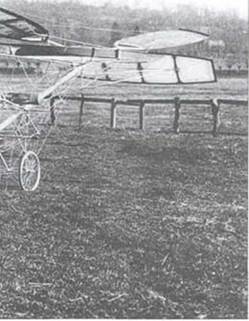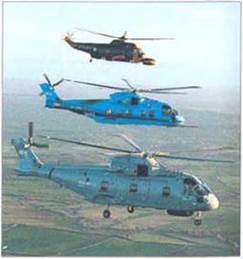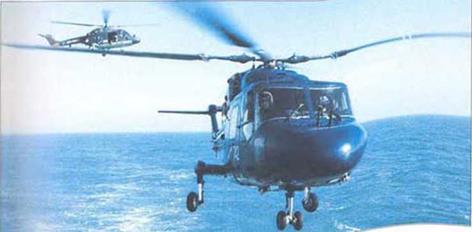INTRODUCTION
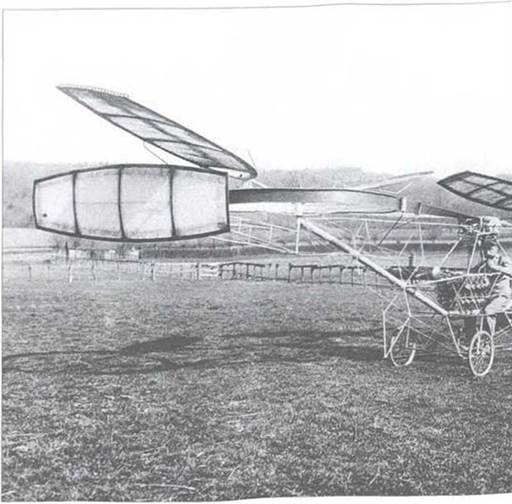
|
A |
s long ago as the fourth century
iu., children in China were playing with a little toy whose principle would lx* used hundreds of years later to bring a new dimension to the science of flight It was a simple round stick with feathers mounted on top. each feather twisted slightly so that it struck the air at an angle when the stick was spun.
creating enough lift to enable the device to fly up into the air. Two hundred yeans later. Archimedes of Syracuse* – the Greek physicist and inventor who was responsible for many scientific discoveries that laid the foundations of modern science – hit u|KMi exactly the same principle lor use in a different medium.
I le perfected a rotating screw which.
|
|
when fined inside a cylinder, made an excellent water-pump Rotated continuously inside the cylinder, the screw puslied against the water and moved it along, and this in turn gave rise to a reaction: the water resisted In pushing hack. Two thousand years were to elapse before the principle that governed the operation of Archimedes’ screw in w ater
|
Loft: Paul Cornu’s 1907 ‘Flying Bicycle’, the first machine to take off vertically with a pilot and make a controlled free flight. |
Above: The European-manufactured EH. 101 Merlin is one of the now generation of large multi-role helicopters.
Right: The CH-53E is currently the West’s most powerful helicopter.
Far right: The tandem-seat AH-64 Apache is one of the leading battlofiold helicopters in the world, and packs a powerful punch.
was applied to another fluid – air – to produce a lifting force.
On 13 Xovcmlxx 1907. a Frenchman named Paul Cornu made the world’s first free, untethered, manned helicopter flight at Coquainvilliers. near Lisieux. His primitive machine – known as the flying bicycle’ – hovered 50 cm (I ft) clear of the ground for 30 seconds. It would l>e
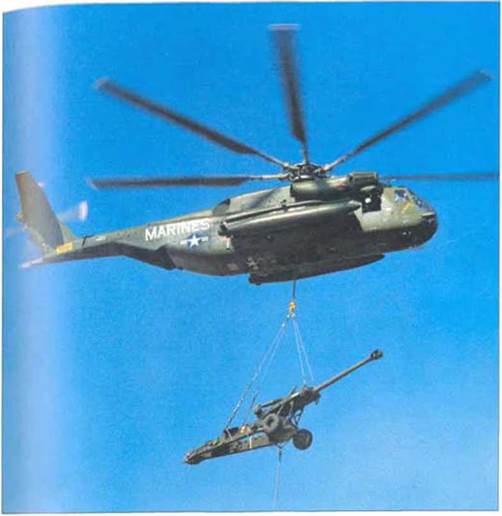 |
nuiny years before ibe dream ol vertical flight became.1 practical reality, but it was a beginning.
The early pioneers of rotary-wing flight faced a formidable challenge, because to make a helicopter (die name means, literally, flying screw > fly successfully, several different principles must lx* brought together. The first of these is lift.
The cross-section of a helicopter blade is of aerofoil shape, just like the wing section of a conventional aircraft. The top surface of this aerofoil section is more curved, or canilx*red. than the under surface, so that when a stream of air Hows over it the speed of the air increases and its pressure decreases. Under the wing the opposite happens; since the wing is
Introduction

usually inclined at ;i small angle to the airflow, the air passing underneath it is slowed down by Ix’ing obstructed and the pressure increases. Hie high pressure area IK’l<>\ the wing tries to move towards the low pressure area above the wing, and a lifting force is created.
Л conventional aircraft has to move forward through the air to reach the speed
where enough lift is obtained to take it off the ground, but with a helicopter, the wings – or rotor blades – are gien motion through the air by rotation, even when the aircraft is not moving.
The amount of lift produced by a helicopter’s rotor blades depends on three things: the shape and size of the blades, the speed at which they rotate, and their
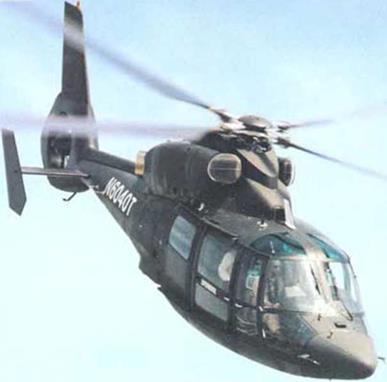 |
angle of attack – the angle at whic h they bile into the air One or more of these factors must Ik* increased if* the lift is to lie increased. The first two iwesibilities are both ruled out; there is nothing the pilot can do to alter the size of the blades, nor has he the reserves of engine power at his dis|X>sa! vers – quickly when he needs extra lift.
He can. however, alter the angle of
attack, for the main rotor blades of a helicopter can lie automatically ‘feathered – in other words, made to twist in the rotor hub. If the angle ol attack of all the blades is increased at the same time, there is a sudden increase in total lift, and when the lift Ivcomes greater than the weight, the helicopter rises off the ground. Once airborne, the pilot can
 UNITED NATIONS
UNITED NATIONS
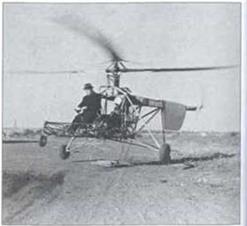
Loft: The Eurocopter Panther is one of a number of highly successful multi-role helicopters built by Aerospatiale and then Eurocoptcr.
Above: Mil Mi-26s have been used on United Nations humanitarian relief operations in recent years.
Right: Igor Sikorsky pictured piloting his first successful helicopter, the VS300. in 1939.
Far right: A Wallis autogyro in the colours of the Royal Air Force.
make the aircraft hover by slightly reducing tlie angle of attack of the blades so the total lift of the rotor now balances the weight of the helicopter. ‘Го alter the angle of attack of all blades at the same moment the pilot uses a lever known as the collective pitch control.
The helicopter is now off the ground and hovering, but to make it move
forward through the air some 1‘onn of horizontal thrust is needed. A conventional aircraft achieves this by means of its propeller or jet exhaust; in a helicopter, the lift force is tilled slightly to produce a horizontal thrust component. Tills can lx* achieved by lilting the whole rotor assembly slightly forward, but in practice it was found more effective to
|
|
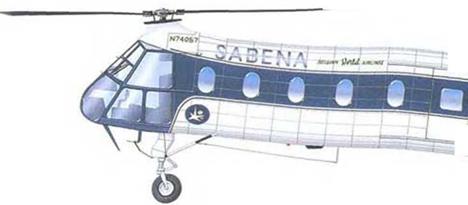 |
h*nge each blade to the rotor huh so that it сап Пар’ up and down. When the helicopter is motionless on the ground, its rotor blades have a noticeable ‘droop* because of this hinge arrangement; a slop is fitted lx*Um each blade to prevent it drooping too far When the main rotor starts t« * revolve at inc reasing speed, centripetal force (the force that is exerted
Above: The Piasecki/Voriol H-21 was flown in Sabcna colours at the 1958 World’s Fair.
Right: The Flcttncr FL 282 Kolibri appeared towards the end of World War II and was one of the world’s first successful military helicopters.
when you swing a weight around on a piece of string) tends to lilt the blades back to a horizontal position.
As each blade is feathered its angle of attack increased to produce more lift it rises slightly on its hinge. II the angle of attack is reduced slightly as it approaches the forward position on its way around the rotor disc, the lift is
Introduction
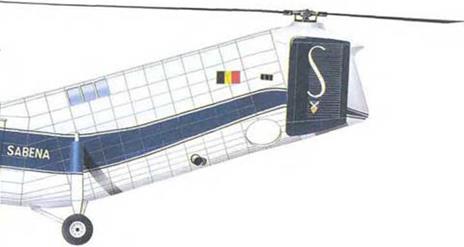
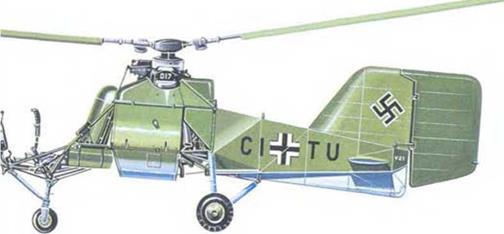
slightly reduced loo; and if the angle of attack is inc reased again as the blade retreats’ rearwards so the lift is increased – with the result that each blade flaps downwards as it revolves through the forward position under the influence of centripetal force and rises under the influence of lift as it passes around the rear of the disc.
The whole effect is of the rotor disc tilting forward to produce forward thrust, with each blade changing its pitch as it moves round. This change of pitch is automatic and is governed by the cyclic pitch control.
If the helicopter consisted only of a set of main rotor blades mounted on the fuselage, the reaction to the rotor as it
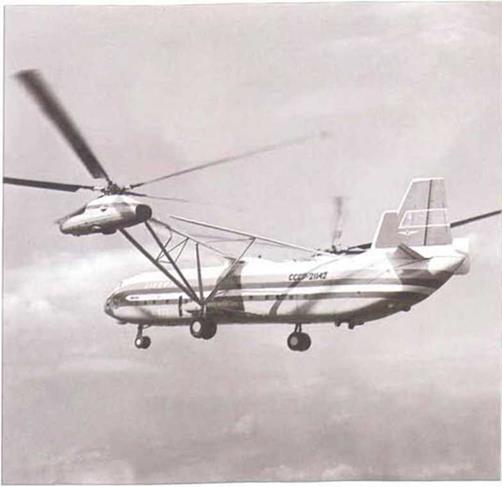
revolved would lurn the fuselage in I III* opposite direction. Tliis is known as torque effect. and is nornially overcome by a small vertically-revolving rotor mounted at tile tail to prevent the fuselage from swinging round.
To operate all the helicopter’s mechanical devices, the pilot has four main controls: the collective pitch control, the throttle, the cyclic pitch control and the tail rotor control.
In the 1920s. while designers struggled to overcome the problems of helicopter design, a young Spanish aircraft designer named Juan de la Сп іл а (Jordonia came up with an alternative, which he named the autogiro In this machine, lift was provided by a frecly-windinilling rotor, and forward propulsion by a conventional aero-engine. Although the autogiro could never jHTlorm all the functions of a helicopter, it had practical applications in
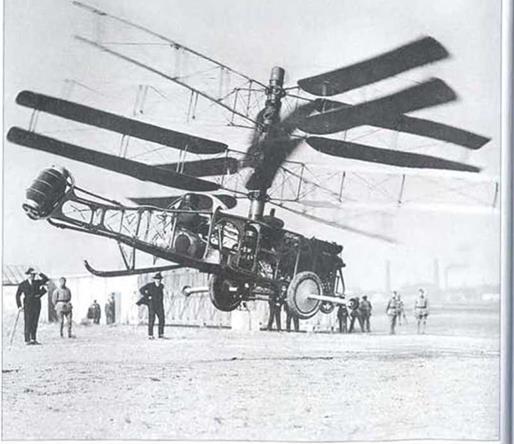 |
both civilian and military fields, and was widely used in the years lx*tween the two world wars.
It was left to the inventive Germans to produce the world s first truly successful helicopter, the twin-rotor Focke-Wull Fw 61. Designed by Professor Heinrich Focke. it first flew in 19.56 and went on to establish a numlx-r of world records. For the next few years, the Germans enjoyed an undisputed lead in helicopter
development, I ho I wo companies. it the forefront Ix’ing I«кkc Schgelis and Hetiner. ‘lliese firms pioneered the operational use of the helicopter In World War II. both as an air observation platform anil a transport vehicle. On the Allied side, one name quickly came to the forefront of helicopter design: that ol Igor Sikorsky. It is a name that still stands at the forefront of medium and heavy helicopter design unlay Another American
Far left: Tho huge twin-rotor Mil V-12 shattered every record for hclicoptor payload.
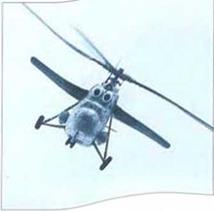 Lett Pescara’s No.3 helicopter, the first to incorporate collective and cyclic controls.
Lett Pescara’s No.3 helicopter, the first to incorporate collective and cyclic controls.
Right: The giant Mil Mi-6 pioneered the use of supplementary wings for extra lift.
Far nght: The Sikorsky S-61 is one of the most common search and rescue helicopters.
|
firm, Bell Helicopters, dominated the postwar market Гог lighter machines, ranging from utility to Гам attack helicopters In tin Soviet Union, Igor Sikorsky’s opposite numlx-r was Aitem I Mil. whose design bureau was responsible Гог a range of massive heavy-lilt helicopters. By the beginning of the 21st century, more than 30.0Ш Mil helicopters had been Іміііі, with manv of tlx-.se rugged machines remaining in service worldwide.
.. -«nc? economics
". Western toi |o 1|U|
eventuallv conip1 l, c
specialised in lielicopicr prixluafon to join forces. liuuxopier is now I 111- official manufacturer of all МНИ and Aerospatiale helicopters, and Britain’s Westland now operates under the name GKN Westland.
In common with other types of aircraft. Ix>th civil and military, helicopters arc – now the subject of joint design and production on 14*11 sides of the Atlantic.
Introduction

Today, helicopters are applied to so many diflfcrcni tasks that it is difficult to list them all. They are the most versatile flying machines in existence, and they enable the pilot to operate in three dinK*nsions in a way that no fixed-wing aircraft can – except, ot course, VSTOL machines like the Harrier, which are intended for a specific role and which are by no means as prolific.
The helicopter, for all that it is expensive to operate, has become an
indispensable tool of modern aviation. New technology, in particular the use of advanced composite materials of far greater strength and lightness than anything previously available, has given designers the means to enter a new phase of development that combines greater speeds with lower operating costs. It is in the commercial world of tomorrow that the helicopter will make its greatest impact.
Aerospatiale











